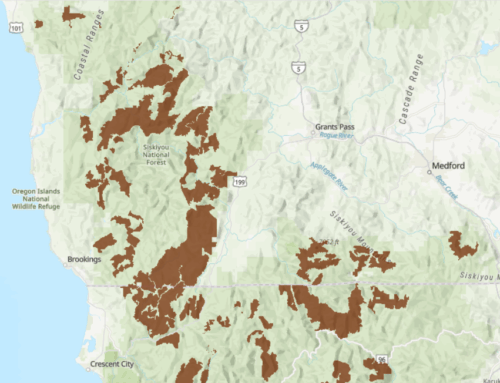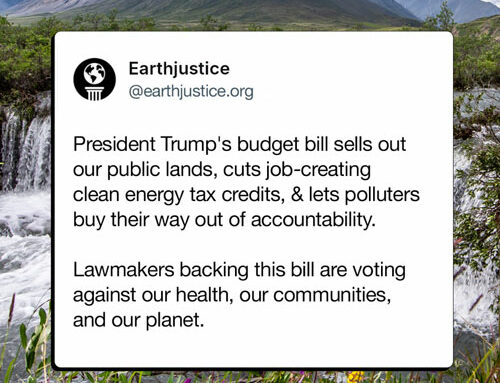The Conservation Column
By Pepper Trail
Well, the election is over – right? Despite the outrageous attempts by the Trump administration to contest President-Elect Biden’s clear victory, we WILL have a new president on January 20. Unfortunately, there are plenty of anti-environmental decisions being rushed through in the meantime. I start this Conservation Column with two of the worst, both concerning irreplaceable wilderness in Alaska. But if you read to the end, you’ll find a hopeful story closer to home.
Rushing to Log the Tongass National Forest
President Trump opened up more than half of Alaska’s Tongass National Forest to logging and other forms of development a few days before the election, stripping protections that had safeguarded one of the world’s largest intact temperate rainforests for nearly two decades.
As of October 29, it became legal for logging companies to build roads and cut and remove timber throughout more than 9.3 million acres of forest – featuring old-growth stands of red and yellow cedar, Sitka spruce, and Western hemlock. The relatively pristine expanse is also home to plentiful salmon runs and imposing fjords. The decision, which will be published in the Federal Register, reverses protections President Bill Clinton put in place in 2001 and is one of the most sweeping public lands rollbacks Trump has enacted.
The new rule states that it will make “an additional 188,000 forested acres available for timber harvest,” mainly “old growth timber.”
For years, federal and academic scientists have identified Tongass as an ecological oasis that serves as a massive carbon sink while providing key habitat for wild Pacific salmon and trout, Sitka black-tailed deer, and myriad other species. It boasts the highest density of brown bears in North America, and its trees – some of which are between 300 and 1,000 years old – absorb at least 8 percent of all the carbon stored in the entire Lower 48′s forests combined.
“While tropical rainforests are the lungs of the planet, the Tongass is the lungs of North America,” Dominick DellaSala, chief scientist with the Earth Island Institute’s Wild Heritage project, said in an interview. “It’s America’s last climate sanctuary.”
Rushing to Sell Oil Leases in the Arctic National Wildlife Refuge
The lame duck Trump administration is making a rushed last-minute push to sell leases to oil companies in the long-protected Arctic National Wildlife Refuge before Inauguration Day, numerous outlets reported.
On November 16, the Interior Department issued a “call for nominations” asking oil companies to request specific parcels of land to be made available for drilling.
“Any company thinking about participating in this corrupt process should know that they will have to answer to the Gwich’in people and the millions of Americans who stand with us,” said Bernadette Demientieff, executive director of the Gwich’in Steering Committee, in a statement. Despite the Trump administration’s efforts, oil companies may still struggle to drill in ANWR, given substantial logistical costs and recent moves by major financiers to stop funding drilling there.
Completing the lease sales before President-elect Joe Biden takes office on Jan. 20. would make it harder, though not necessarily impossible, for the Biden administration to prevent oil drilling in ANWR.
Important Saline Lakes Legislation Introduced in US Senate
This past summer, U.S. Senator Jeff Merkley (D-OR) and U.S. Senator Mitt Romney (R-UT) introduced the Saline Lake Ecosystems in the Great Basin States Program Act of 2020. Nevada Senators Rosen and Cortez-Masto, also have joined as co-sponsors. The legislation recognizes the ecological and economic benefits of saline (salt) lakes in the American West. This legislation will establish a program within the U.S. Geological Survey (USGS) to assess, monitor, and benefit the hydrology of saline lakes in the Great Basin and the migratory birds and other wild-life that depend on them. Though less well-known than Utah’s Great Salt Lake and California’s Mono Lake, Oregon’s Lake Abert, north of Lakeview, is one of the most important of these saline lakes for migratory shorebirds and grebes.
As human communities grow, so does agriculture and urban development and the corresponding need for freshwater. The ever-growing demand for freshwater, combined with frequent drought conditions and climatic changes, has led to terminal saline lakes with declining water levels. This is especially true in the Great Basin of the American West, which includes Utah, Nevada, and portions of Idaho, California, and Oregon. The communities near saline lakes rely on the lakes for their businesses, livelihoods, and quality of life. Less water leads to increased concern for public health, the economy, and environment.
For wildlife, including shorebirds, these changes in saline lakes are also devastating. Contrary to what you might think, salt lakes are a highly-productive system that supports the life cycles of thousands of species, among which are dozens of species of shorebirds.
But what makes these sites so attractive for some birds? Terminal saline lakes are able to efficiently accumulate and recycle nutrients that sustain many flora and fauna. However, living in a hypersaline environment is a physiological challenge to which not all living things are adapted. Fish, for example, cannot survive in lakes with extremely high salinity. In the absence of these predators, the few species of invertebrates that inhabit these environments reach high levels of abundance and are exclusively available as prey to birds. But the abundance of invertebrates is not the only factor; the seasonality of their life cycles is also of vital importance. Thousands of shorebirds and Eared Grebes descend on the salt lakes, which serve as migratory stopover sites, at the exact moment when the invertebrates are at their maximum abundance.
Wilson’s Phalarope is one of the bird species that is best adapted to hypersaline environments. Imagine for a moment that you are a little phalarope at the end of the reproductive season. You are exhausted after the great investment of energy you have undertaken during the last few weeks, molting your feathers to a colorful dress, performing courtship and building a nest, laying eggs and taking care of your chicks. The time has arrived for you to begin your migration south, but ahead of you lies a journey of thousands of kilometers to South America. There will be days and days of uninterrupted flight. To be successful you will need to store all the energy you can in your little
body. As if that wasn’t enough, you don’t need your breeding plumage anymore and you have to molt your feathers again! All of this needs to be done in a couple of weeks, but how?
Fortunately, as a phalarope, you can count on the resources offered by the salt lakes of the western United States for help. The few species of invertebrates that inhabit these environments (mainly crustaceans of the ge-nus Artemia and dipterans of the genus Ephydra) reach high levels of abundance, and are an abundant food source that is rich in lipids and proteins. Feeding on them allows you to rapidly raise your body weight, so that it may almost double in just a couple of weeks.
If you imagine yourself as the phalarope again, traveling through the arid western part of the United States, you must have these saline refuges available every year. The long-term monitoring and assessment plan with the USGS proposed by the Saline Lake Ecosystems in the Great Basin States Program Act will support the protection of the habitat that phalaropes need. Comprehensive monitoring and assessment of saline lake ecosystems will help managers understand changes and promote coordinated management across the Great Basin. “Saline lakes contribute significantly to local communities and their economies, as well as habitat for millions of birds,” said Marcelle Shoop, Audubon’s Saline Lakes Program Director. “While there have been efforts to study and protect these saline lakes at a local level, this effort also will support birds across the flyway, while benefitting communities locally. Improving our scientific understanding of the hydrology and habitats of these unique natural resources can inform coordinated approaches to management and conservation across the Great Basin.”
On that hopeful note – see you all in 2021. It’s GOT to be better!



Leave A Comment
You must be logged in to post a comment.